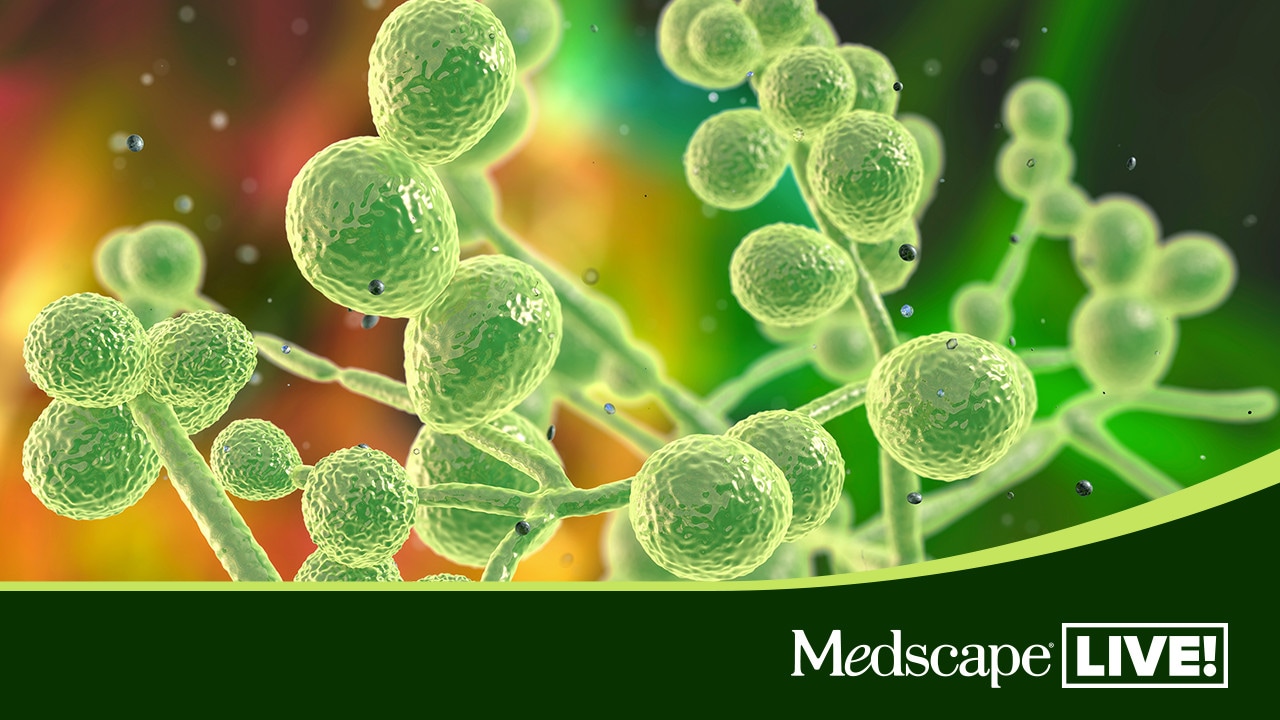Practice Essentials
Thrush is an infection of the buccal cavity by Candida albicans, which was first described by the French pediatrician Francois Valleix in 1838. The disease is typically limited to infants and neonates, patients on antibiotics or steroids, and patients with polyendocrine disorders or underlying immune dysfunction. Thrush may be the first sign of human immunodeficiency virus (HIV) infection; its appearance in advanced HIV infection indicates poor prognosis. Children who are receiving inhaled steroids also have increased incidence of oral candidiasis. See the image below.
 White plaques are present on the buccal mucosa and the undersurface of the tongue and represent thrush. When wiped off, the plaques leave red erosive areas. Courtesy of Matthew C. Lambiase, DO.
White plaques are present on the buccal mucosa and the undersurface of the tongue and represent thrush. When wiped off, the plaques leave red erosive areas. Courtesy of Matthew C. Lambiase, DO.
Signs and symptoms
Lesions often start as tiny focal areas that enlarge to white patches on oral mucosae. When scraped with a tongue blade, lesions are difficult to remove and leave behind an inflamed base that may be painful and may bleed.
See Presentation for more detail.
Diagnosis
The diagnosis can be confirmed by simple histologic findings. Pseudohyphae and gram-positive yeast can be seen with Gram staining or with potassium hydroxide staining.
See Workup for more detail.
Management
Antifungal therapy generally hastens resolution of infection.
See Treatment and Medication for more detail.
Pathophysiology
C albicans causes thrush when normal host immunity or normal host flora is disrupted. Overgrowth of yeast on the oral mucosa leads to desquamation of epithelial cells and accumulation of bacteria, keratin, and necrotic tissue. This debris combines to form a pseudomembrane, which may closely adhere to the mucosa. This membrane is usually not large but may rarely involve extensive areas of edema, ulceration, and necrosis of the underlying mucosa.
Affected neonates are typically colonized by C albicans during passage through the birth canal. Hence, the risk for thrush is increased when the mother has an active vaginal yeast infection. Other sources of transmission to neonates include colonized breasts (for breastfed infants), hands, and/or improperly cleaned bottle nipples. Kissing has also been implicated.
C albicans frequently and asymptomatically inhabits the GI tract of many children and adults, and the GI tract has been implicated as a reservoir for yeast contamination of the perineum. Thus, candidal diaper rash frequently occurs in conjunction with thrush.
A systematic review and meta-analysis reported that the prevalence of oral candidiases caused by non-albicans Candida species in sub-Saharan African HIV patients was 33.5% [95% confidence interval (CI) 30.9-36.39%]. Non-albicans Candida species found included C glabrata (23.8%; 109/458), C tropicalis (22%; 101/458) and C krusei (10.7%; 49/458). [1]
A study by Karajacob et al found that nearly one third of the oral Candida species isolated from cultures of patients with oral thrush were non-albicansCandida. C tropicalis was the most commonly isolated non-albicansCandida species (21.1%), and C glabrata was cultured from 15.8% of oral samples. [2]
Etiology
Consider an underlying immune deficiency such as AIDS, especially in recurrent cases and in older infants. For chronic infection, chronic mucocutaneous candidiasis should be considered.
Systemic antibiotic use may disrupt the normal flora, promoting candidal overgrowth.
Use of systemic and inhaled steroids is associated with increased incidence of oral thrush.
An increased prevalence of oral candidiasis has been reported among patients with novel coronavirus disease (COVID-19). One review found that 10.74% of adults with COVID-19 had oral thrush, and another study reported oral thrush in 11.63% of pediatric patients. [3]
Epidemiology
United States statistics
As many as 37% of newborns may develop thrush during the first months of life.
International statistics
Thrush is universal and is more common in poorly nourished populations.
Sex- and age-related demographics
Thrush occurs equally in males and females.
Thrush is rare during the first week of life. Incidence peaks around the fourth week of life; thrush is uncommon in infants older than 6-9 months. Thrush can occur, however, at any age in predisposed patients.
Prognosis
Thrush is considered a self-limited disease, but resolution is hastened by medical therapy.
Morbidity/mortality
Thrush is usually a mild and self-limited illness, although it may cause discomfort sufficient to disrupt feeding in a newborn. Consider the possibility of an underlying immunodeficiency when thrush occurs after early infancy or without a reasonable explanation.
Complications
Very rarely, extensive tracheal and esophageal involvement in thrush may lead to dysphagia and respiratory distress in otherwise healthy hosts.
Bronchopulmonary candidiasis has been reported.
Systemic dissemination may occur in immunosuppressed patients.
Candidal esophagitis is a common complication of thrush in immunocompromised patients. In one study, it was the most common opportunistic infection in adults with acquired immunodeficiency syndrome (AIDS) (13.3 episodes per 100 person-years).
Patient Education
Discuss thrush etiology and incidence as part of general reassurance to the parents of the healthy newborn or infant.
If indicated, offer information about the necessity of further evaluation for underlying immune dysfunction.
-
White plaques are present on the buccal mucosa and the undersurface of the tongue and represent thrush. When wiped off, the plaques leave red erosive areas. Courtesy of Matthew C. Lambiase, DO.









